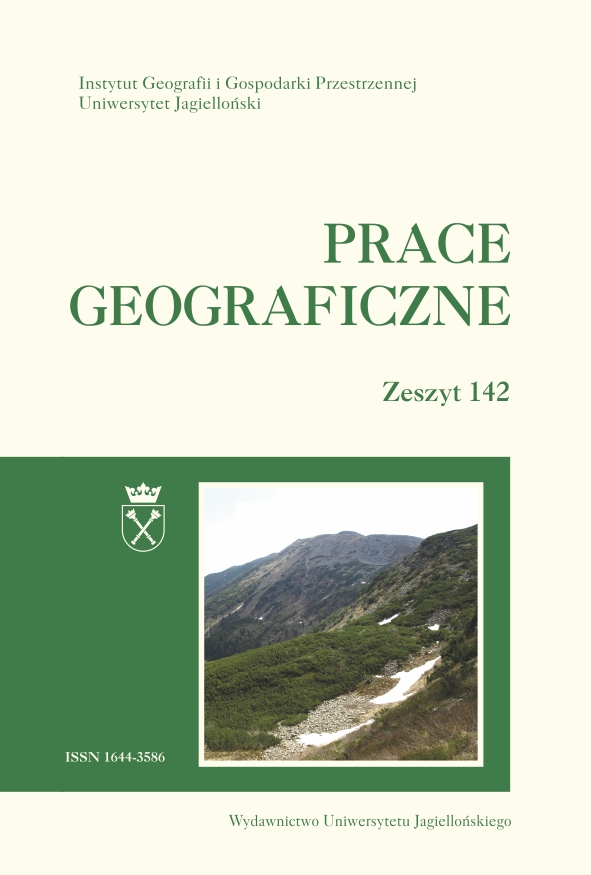Wpływ działalności człowieka na funkcjonowanie jeziora osuwiskowego, na przykładzie Pucołowskiego Stawku w Gorcach
Human impact on the evolution of a landslide lake. Case study: Lake Pucołowski Stawek in the Gorce Mts
Author(s): Krzysztof BuczekSubject(s): Geography, Regional studies, Human Geography, Environmental Geography
Published by: Wydawnictwo Uniwersytetu Jagiellońskiego
Keywords: landslide lake; peat bog; land use change; renaturalization; active conservation; Gorce Mts.
Summary/Abstract: The paper presents the results of a study of the human impact on the evolution of a landslide lake. An example of a landslide lake subjected to strong anthropogenic influence is that of the Pucołowski Stawek lake in the Gorce Mts. Historical data analysis, interviews with local inhabitants, and several surveys of the lake area and shoreline at various moments of its history have enabled us to reconstruct the lake’s evolution since the early 20th century. Research has shown that since the first field description in 1932, the lake did not become overgrown (as it is very common for this type of lake), until the late 1980s. The reason for its preservation has been human activity. The subsequent acceleration of the overgrowing of the Pucołowski Stawek lake has been connected with the cessation of mowing, grazing and peat extraction in the lake basin. This has led to the full disappearance of this water body and the reservoir to fen type peat bog. In December 2011, the owners of the lake deepened the lake basin and removed organic sediments at the same time. This led to lake reactivation, although with a changed shoreline. The area of the lake basin decreased about 22% compared with its size in 1968. The same is true of the shoreline development factor which is now 1.08 compared with 1.23 in 1968. Dynamic plant succession has been observed since 2012 in the Pucołowski Stawek lake, and the lake area has decreased about 27% compared with its size in 2012. The consequences of the action which led to the deepening of the lake significantly affected the fauna and flora of the reservoir, causing improvement in amphibians’ habitat conditions. Human activity in this area has led to water reservoir reactivation, giving it unique landscape value as well as increasing its biodiversity by restoring adequate habitat conditions.
Journal: Prace Geograficzne
- Issue Year: 2015
- Issue No: 142
- Page Range: 41-56
- Page Count: 16
- Language: Polish

